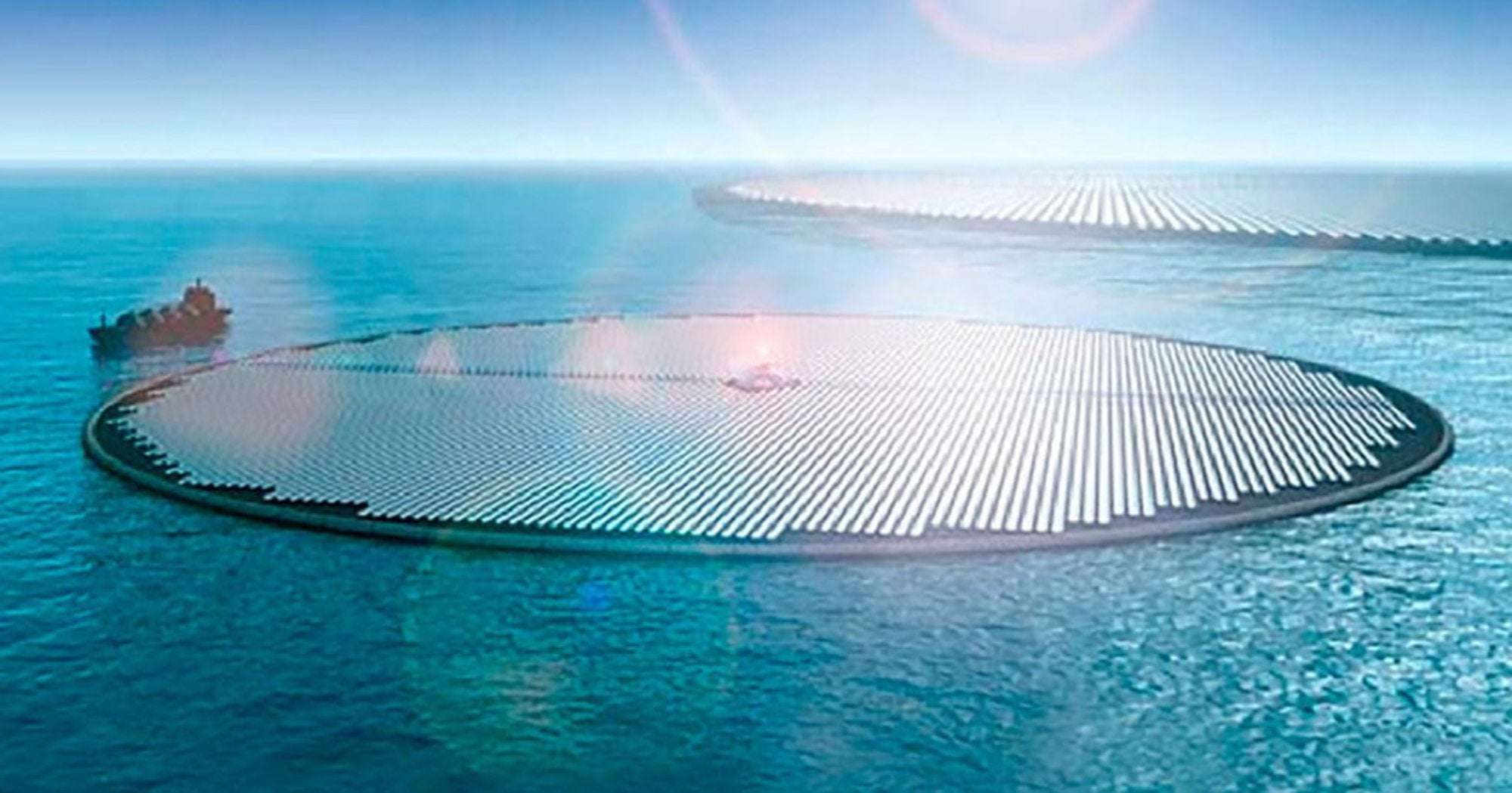Millions of solar panels clustered together to form an island could convert carbon dioxide in seawater into methanol, which can fuel airplanes and trucks, according to new research from Norway and Switzerland and published in the Proceedings of the National Academy of Sciences journal, PNAS, as NBC News reported. The floating islands could drastically reduce greenhouse gas emissions and dependence on fossil fuels.
The paper argues that the technology exists to build the floating methanol islands on a large scale in areas of the ocean free from large waves and extreme weather. Areas of the ocean off the coasts of South America, North Australia, the Arabian Gulf and Southeast Asia are particularly suitable for mooring these islands.
"A massive reduction in CO 2 emissions from fossil fuel burning is required to limit the extent of global warming. However, carbon-based liquid fuels will in the foreseeable future continue to be important energy storage media. We propose a combination of largely existing technologies to use solar energy to recycle atmospheric CO 2 into a liquid fuel," the study authors wrote in PNAS. The paper suggests floating islands are similar to floating fishing farms. The researchers envision clusters that would consist of approximately 70 circular solar panels, or islands, covering an area of roughly a half of a square mile. The solar panels would produce electricity, which would split water molecules and isolate hydrogen. The hydrogen would then react with the carbon dioxide pulled from the seawater to produce usable methanol, according to NBC News. The study authors argue that this method will address the hurdles of making renewable energy competitive with fossil fuels on a large scale, as Newsweek reported. Andreas Borgshulte, a co-author on the paper, said the idea for the solar islands came to the researchers when they were asked by the Norwegian government to push fish farms out to open sea. Those grids needed their own energy. "Energy 'producing' islands had been proposed some time ago," he said to Newsweek. "What remained was to include energy storage." Borgshulte and his team are currently developing floating island prototypes. They estimate that output from 3.2 million floating islands would exceed the total global emissions from fossil fuels.

putin_vor on October 13rd, 2019 at 16:07 UTC »
I've heard many proposed floating projects, and most of them don't address what happens in a storm. People don't realize how much power even a 5 meter wave has, let alone a monster one at 10 or 20 meters. They will crush your solar panels like tin foil.
SandyMandy17 on October 13rd, 2019 at 14:51 UTC »
I’m just here for the mahi mahi that would hide underneath
fudgyvmp on October 13rd, 2019 at 14:42 UTC »
How much weight can they support? If it's enough, you know what this means?
Solar Floating Roadways!